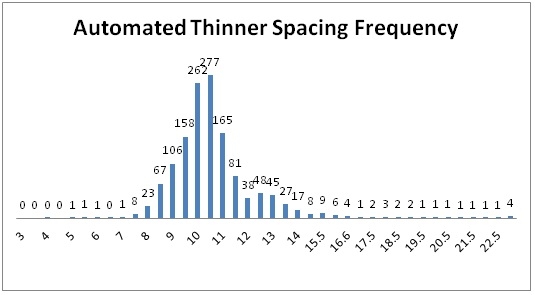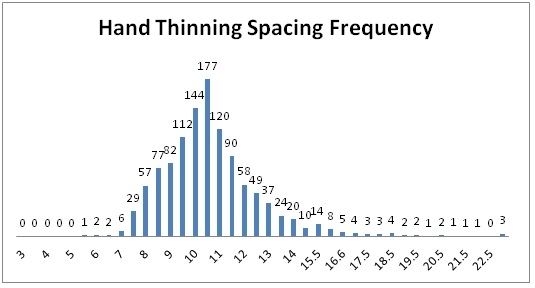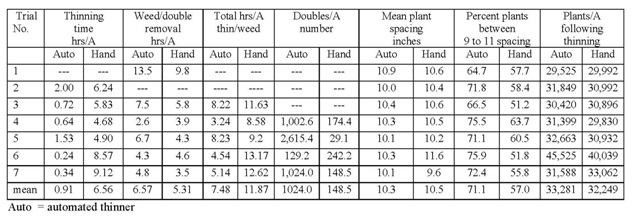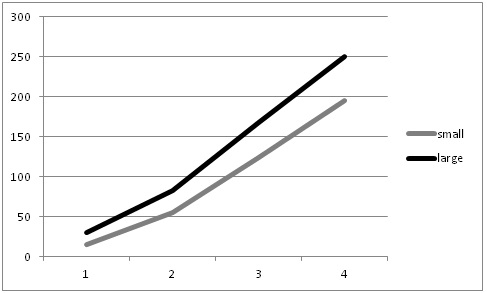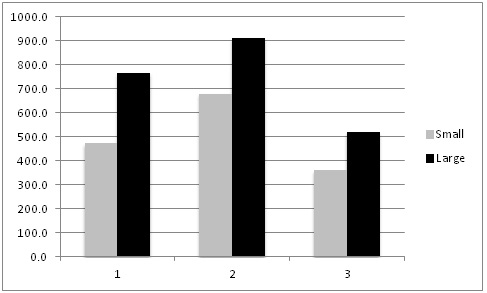Summary:The use of automated thinners in the Salinas Valley has increased dramatically over the past two years. There are now four companies that manufacture automated thinners that use a spray system that removes the unwanted lettuce plants as well as weeds. This technology arrived just as the Salinas Valley was experiencing a labor shortage; many growers have adopted this technology or are in the process of seriously examining its usefulness to their operations. An evaluation of automated thinners was conducted in seven commercial lettuce fields in the Salinas Valley in the summer of 2014. The comparison was made with standard hand weeding. Overall, automated thinners were faster and more precise than hand thinning. However, the automated thinner left 7 times more doubles/A than hand thinning and it took more hand labor to remove the doubles in the double removal/weeding operation that occurs about 10 days following thinning; in spite of this issue, the total time to thin and remove doubles/weed in the automated thinner treatment took about 4.3 hours/A less time than hand thinning. A modest increase in yield was observed in the six fields evaluated, but the variability from field to field was quite high.
Methods:An evaluation of automated thinners was conducted during the summer of 2014. Trials were conducted with cooperating growers on seven commercial lettuce fields in the Salinas Valley, CA. The bed configuration and lettuce type are shown in Table 1. Each field was split in half with one side thinned by hand (standard practice) and the other side thinned with an automated thinner. The automated thinners used in these studies were: 1) Foothill Packing, 2) Blue River and 3) Agmechtronix. Thinning time was evaluated by recording the time it took to thin a designated area; this information was converted to hours per acre. In each field, four to six replicate areas two 40-inch beds wide by 90 feet were established in each treatment; these areas were used to make stand and weed count evaluations prior to and following the thinning operation. Following the thinning operation, the numbers of doubles (two closely spaced lettuce plants; see photo 1) were counted, and the distance between plants was measured to determine mean plant spacing and spacing distribution. Approximately 7-14 days following the thinning operation, a hand crew passed through the field to remove doubles and weeds; the time to conduct this double/weeding operation was measured and converted to hours per acre. Commercial and small plot yield measurements were made in six of the seven fields evaluated. Immediately prior to commercial harvest, 24 head from each evaluation area were cut and weighed to determine mean head weight. Plants were subsampled and sent to the UC Davis Analytical Laboratory for total N analysis to determine if the fertilizer used to thin the lettuce in some fields had an effect on the nitrogen nutrition of the crop. In addition, the numbers of heads infected with lettuce head drop (Sclerotinia minor) were counted. Commercial yield was measured in each treatment by obtaining box counts and sizes from the harvest crew. All commercial yields were converted to boxes per acre. The number of unharvested heads was counted in the evaluation areas following harvest. A side trial was conducted to evaluate the impact of size unthinned plants on the final plant size. In three of the fields, 20 heads of small and large plants were marked and plant diameter was measured three-four times during the crop cycle; final plant weight of these plants was measured at harvest.
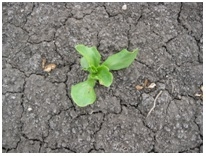 Photo 1. Chemically thinned lettuce |
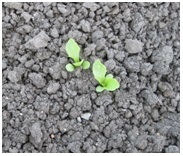 Photo 2. Double plants left by automated thinner |
Results: On average automated thinners took 0.91 hours/A (range 0.24 to 2.0 hours/A) and hand thinning took 6.56 hours/A (range 4.68 to 9.12 hours/A) (Table 2). However, the double removal/weeding operation 7-14 days following thinning took 6.57 hours/A in the automated thinner treatment and 5.31 hours/A in the hand thinned treatment; the increase in time for double removal and weeding in the automated thinner area was due to the greater number of doubles in the automated thinner treatment (1,024 double/A) than hand thinning (149 doubles/A). The total time for thinning and double removal/weeding operations was 7.48 hours/A in the automated thinner treatment and 11.87 hours/A in the hand thinned treatment. The desired spacing for all fields in the study was 10.0 inches. The mean plant spacing in the automated thinner treatment was 10.3 inches (range 10.0 to 10.9 inches) and 10.5 inches in the hand thinned treatment (range 9.6 to 11.6 inches). The percent of plants that were between 9 and 11 inch spacing in the automated thinner and hand thinned treatments was 71.1 and 57.0, respectively. Figures 1 and 2 show the spacing distribution for the automated thinner and hand thinned fields, respectively. These graphs clearly show that the automated thinner left a greater percentage of plants closer to the desired spacing of 10 inches than hand thinning.
On average over six fields evaluated for yield, the automated thinner had an increase in yield of 53 boxes/A (Table 3). Examining the range of yields in the fields evaluated, it can be seen that there was a great deal of variability among fields and the yield was not always higher in fields thinned by the automated thinner. On average there were more 30's in the automated thinner treatment, but data on the number of 30's in only available from three fields which is a particularly small sample size to draw a firm conclusion. In small plot evaluations, we did not measure a difference in the mean plant weight between treatments. Overall the automated thinner had more plants/A than the hand thinned treatment, but again, the data is quite variable. There were no differences in the percent plants with lettuce head drop or in the percent weed control during the thinning operation.
We did not measure the mean plant size left by the two thinning techniques, however, we noticed at one field that the automated thinner treatment may have left a greater proportion of smaller plants. We did a follow-up study to examine the fate of these smaller lettuce plants. Unthinned smaller plants remain smaller through the growth cycle and are smaller at harvest (Figures 3 & 4). This finding indicates that leaving larger plants at thinning (a standard practice used in hand thinning) may help improve yield, but it may sacrifice accuracy. This finding indicates an important detail that may need further research by the automated thinners to help improve the modest yield advantage that we measured in this study.
Table 1. Background information on thinning operations and fields
Table 2. Details on thinning time and spacing
Table 3. Details on pest issues and harvest
